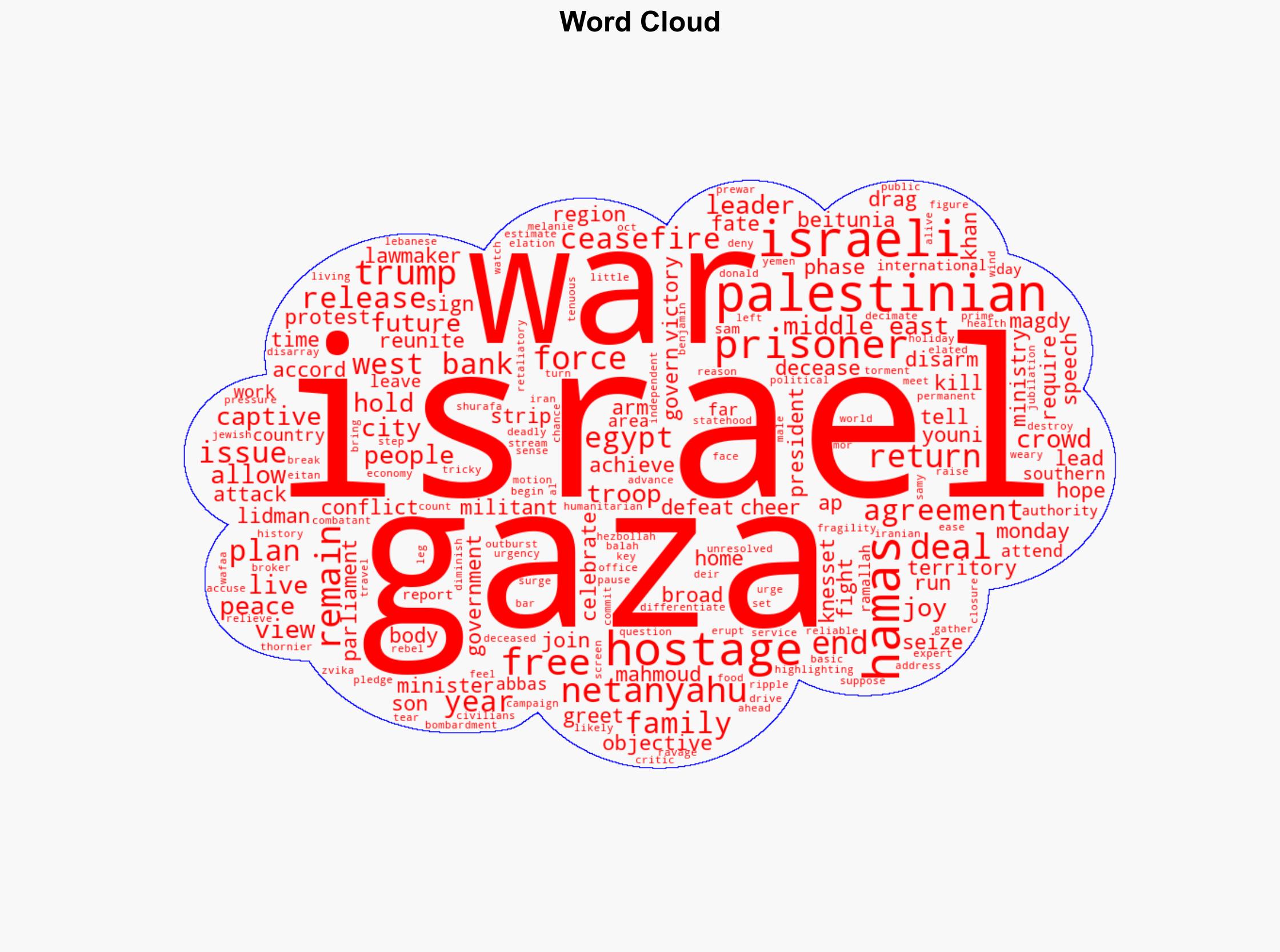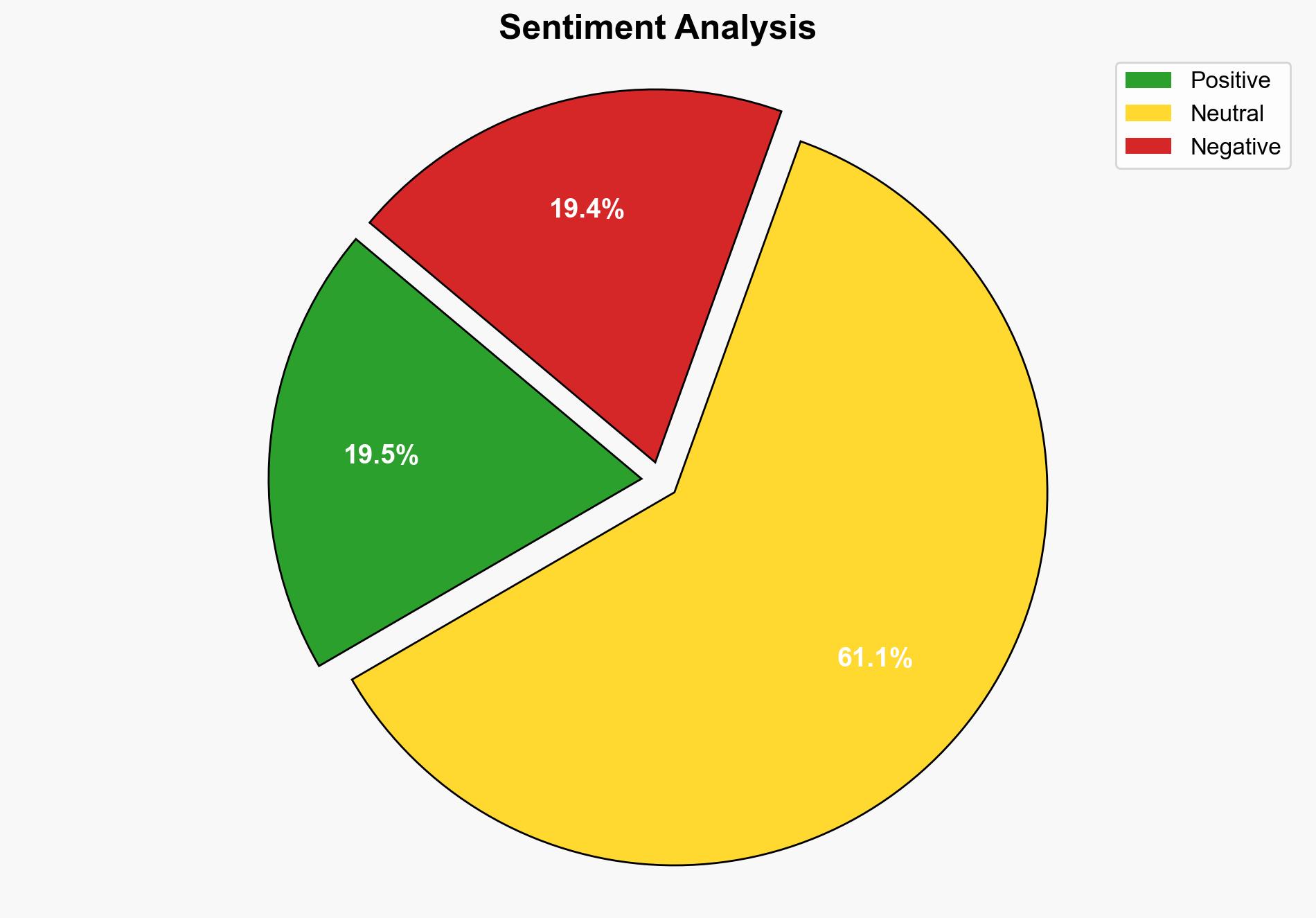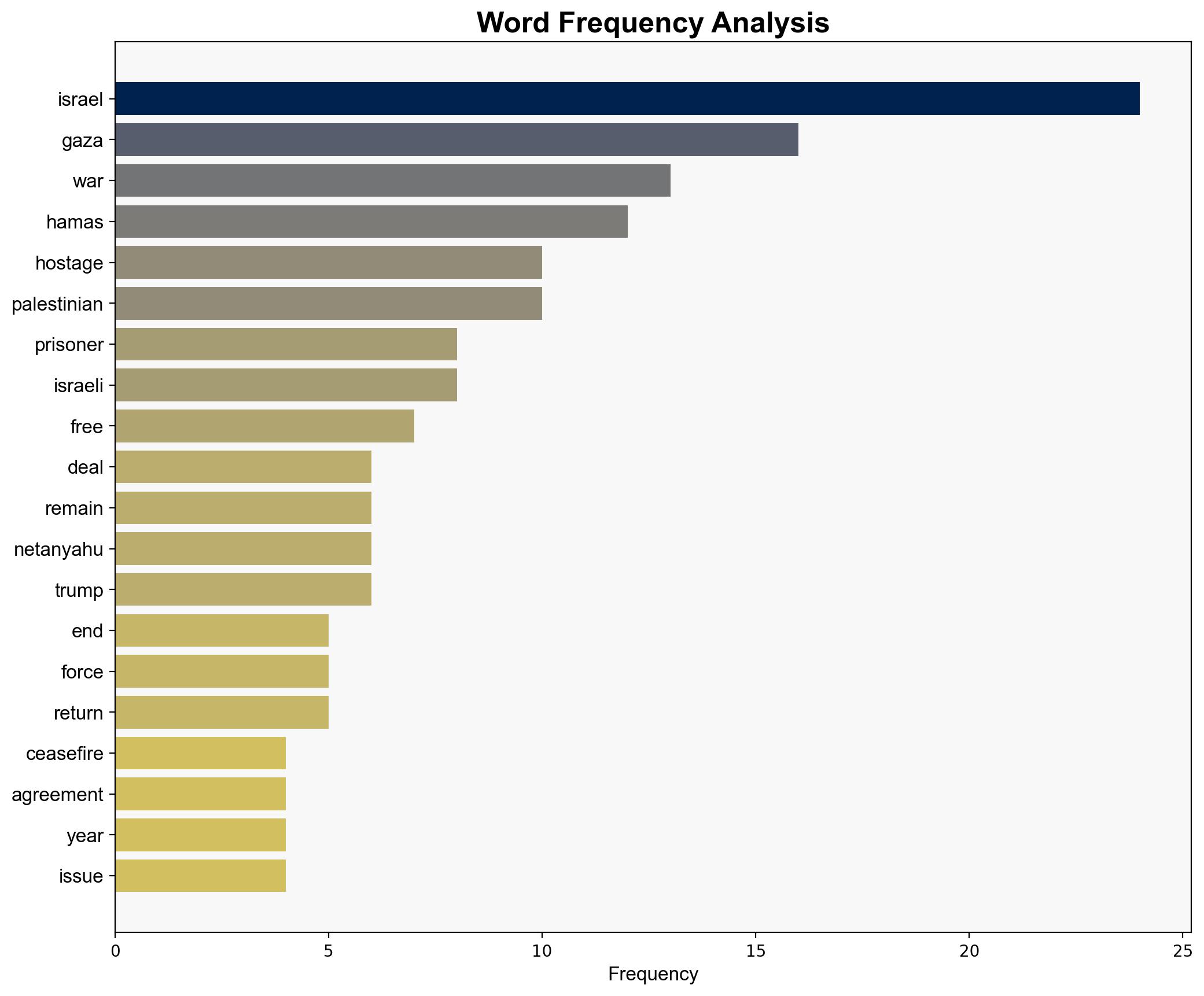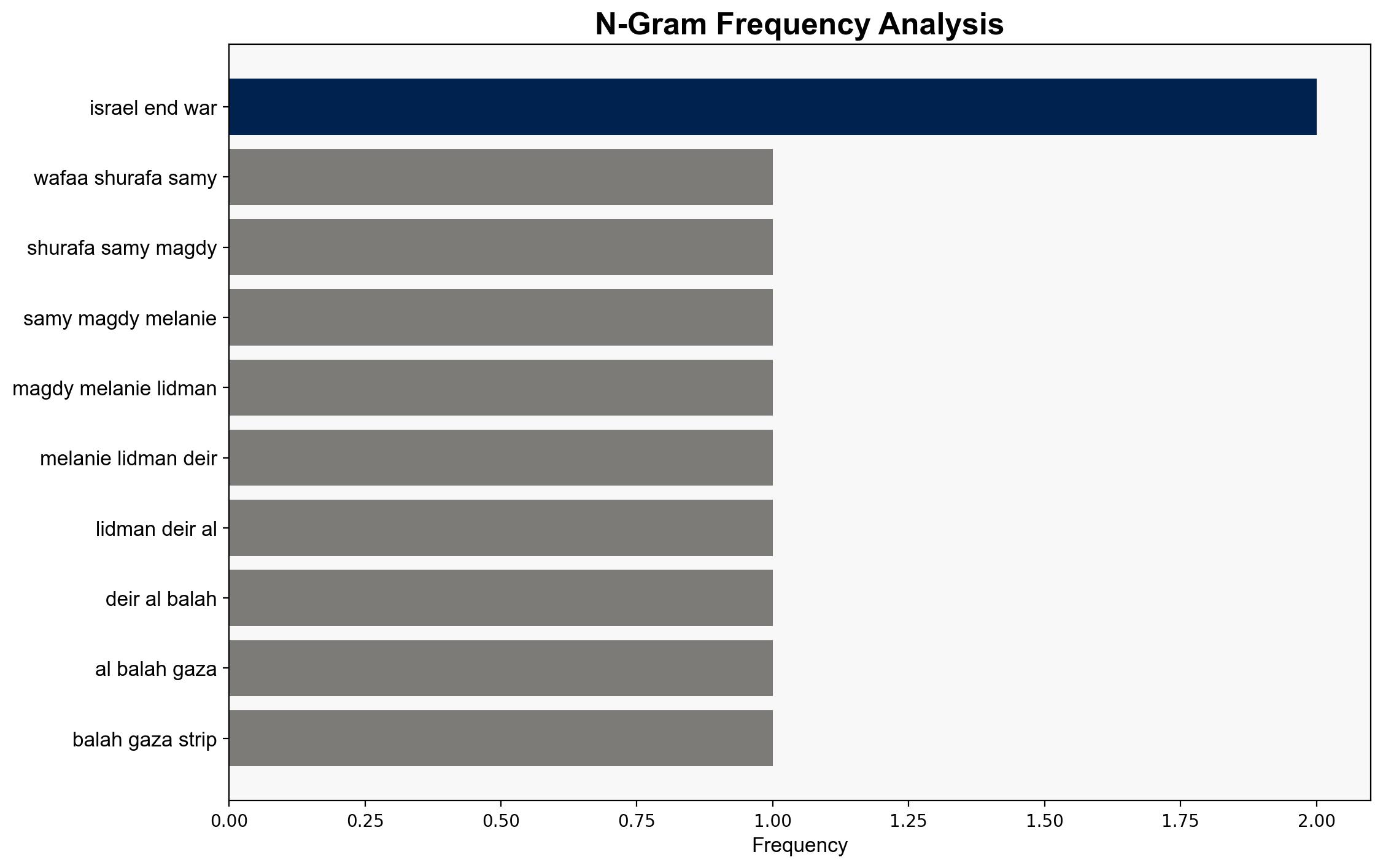Palestinian prisoners arrive in Gaza after being released from Israeli prison as part of ceasefire – Boston Herald
Published on: 2025-10-13
Intelligence Report: Palestinian prisoners arrive in Gaza after being released from Israeli prison as part of ceasefire – Boston Herald
1. BLUF (Bottom Line Up Front)
The release of Palestinian prisoners as part of a ceasefire agreement between Israel and Hamas is a critical step towards de-escalation. However, the fragility of the agreement and unresolved issues such as Hamas disarmament and Palestinian statehood pose significant risks. The hypothesis that the ceasefire will lead to a lasting peace is less supported than the hypothesis that it is a temporary measure. Confidence level: Moderate. Recommended action: Engage in diplomatic efforts to address underlying issues and monitor for signs of ceasefire breakdown.
2. Competing Hypotheses
1. **Hypothesis A**: The ceasefire and prisoner release will lead to a lasting peace agreement between Israel and Hamas.
– **Supporting Evidence**: The release of prisoners and hostages is a significant confidence-building measure. International involvement, including Egypt and other world leaders, indicates a strong push for peace.
– **Contradictory Evidence**: Key issues such as Hamas disarmament and Palestinian statehood remain unresolved. Historical patterns of ceasefire breakdowns in the region.
2. **Hypothesis B**: The ceasefire is a temporary measure that will not lead to a lasting peace agreement.
– **Supporting Evidence**: The ongoing political and military tensions, including recent conflicts involving Hezbollah and Iranian-backed groups, suggest a volatile environment. Criticism of Israeli leadership for allowing the war to continue for political reasons.
– **Contradictory Evidence**: The current ceasefire has temporarily halted hostilities, and there is international pressure to maintain peace.
3. Key Assumptions and Red Flags
– **Assumptions**: Both hypotheses assume that international diplomatic efforts will continue to play a role in the peace process. There is an assumption that both parties are genuinely committed to peace.
– **Red Flags**: The lack of resolution on Hamas disarmament and Palestinian statehood. Potential for internal political pressures in Israel and Gaza to derail the ceasefire.
– **Blind Spots**: The influence of external actors such as Iran and Hezbollah on the stability of the ceasefire.
4. Implications and Strategic Risks
The ceasefire’s fragility poses risks of renewed conflict, which could have regional implications, including increased involvement from neighboring countries. Economic instability in Gaza could exacerbate tensions. The psychological impact on populations in both regions could influence future negotiations and public support for peace efforts.
5. Recommendations and Outlook
- Engage in proactive diplomacy to address unresolved issues such as Hamas disarmament and Palestinian statehood.
- Monitor regional actors, particularly Iran and Hezbollah, for actions that could destabilize the ceasefire.
- Scenario-based projections:
- Best: A comprehensive peace agreement is reached, leading to long-term stability.
- Worst: Ceasefire collapses, leading to renewed conflict and regional escalation.
- Most Likely: The ceasefire holds temporarily, but underlying issues remain unresolved, leading to periodic tensions.
6. Key Individuals and Entities
– Benjamin Netanyahu
– Donald Trump
– Mahmoud Fayez
– Zvika Mor
– Eitan Mor
– Bar Kupershtein
7. Thematic Tags
national security threats, regional stability, peace negotiations, conflict resolution





